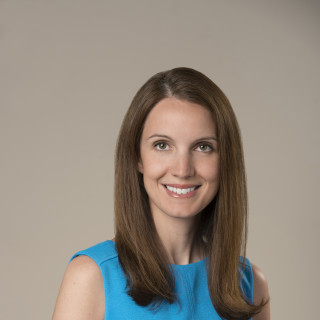
For many health care workers, COVID-19 is a stark reminder of their own mortality. During this pandemic, there have been times when physicians could not get appropriate PPE, elevating worries not just about personal susceptibility, but the direct transmission of this virus to loved ones. There has been a surge in requests from health care workers for instructions on how to complete their wills should the worst happen. And yet, physicians on the front line are still stepping up to the challenge to care for our sick — and our country is taking notice.
COVID-19 is making all of us step back, reevaluate, and remember what is truly important as we navigate this national crisis. For years, physicians have been slowly losing hold on the machine that is “medicine.” Instead of the physician-patient relationship being the focus of medical interactions, office visit considerations have grown to include variables like cost-containment, co-pays, formulary medications, and time-saving shortcuts. Often, the focus of the visit is shrouded by an overwhelming mountain of administrative tasks. Red tape, pre-authorizations, and unpredictable out-of-pocket costs for patients are all variables outside the control of physicians — but they’re variables that chip away at the trust patients have in physicians. How can a patient be sure their physician has their best interest at heart with these competing concerns coloring every interaction?
This pandemic is reminding our country of just how much physicians truly care. They are sacrificing everything and being promised nothing in return. Suddenly, administrators who have been pushing the aforementioned variables are scrambling to find doctors to fill their hospitals. Miraculously, previously strict requirements for state licensure have been dropped. Expired licenses are being “overlooked,” medical students are being graduated early, and retired doctors are being asked to come back to the workforce. The looming physician shortage that we have all been talking about is no longer looming, it’s here and our lack of preparation is showing.
As health care professionals, we need to seize this opportunity to speak out. We need an increase in residency positions. Thankfully, our rural areas have not yet been hit as hard as they might be (at least at the time of writing this article), but make no mistake: there is a gaping deficiency in the number of physicians in remote parts of our country, and if COVID-19 spreads to those areas, patients will suffer greatly.
This pandemic has also shown us that the capacity for telemedicine is greatly improved by loosening the overbearing regulations that govern how and what one can use to communicate with patients. Medicare patients are now able to use telemedicine for the first time, and some of the administrative burdens, regulations, and, quite frankly, unnecessary minutia have been lifted. It is amazing what is happening.
Patients are adapting much more quickly than expected to telemedicine, including our senior citizens. Patients appreciate getting to communicate with their doctors using technology; they appreciate avoiding an unnecessary trip to the office. This pandemic has forced the medical field to leapfrog from where it was — stuck behind most other fields in terms of technological advancement — and finally reap the benefits that can technology can provide, for both patients and physicians. The rules (while well-intentioned for patient privacy) have, until now, put a stranglehold on growth.
Physicians have stepped up to the challenge during this crisis and our nation is remembering what the physician-patient relationship is all about. Volunteers are sewing masks, and donating gloves and other protective equipment to hospitals. Firetrucks are parading outside of hospitals with their sirens blaring, as onlookers applaud the health care workers inside facing this virus head-on, saving patients’ lives. This moment in time will not be forgotten.
Without a doubt, the practice of medicine will be forever changed after this pandemic. Change can be good. In this case, it’s also necessary to adapt to the new challenges in our world and advances of our time. This is a rare moment in which physicians are cutting through the red tape and bureaucracy of health care. We need to capitalize on this moment before it passes. Physicians need to speak up about physician shortages and the need for increased residency spots. We need to speak up about decreasing the administrative tasks that weigh physicians down. We need to advocate again for focusing on the physician-patient relationship. The value of time, spent engaged with patients instead of completing administrative tasks, should be compensated appropriately.
Change is coming, but it must be an intelligent change with patient interests at the forefront. In order to accomplish this, physicians must be leading the movement — or else we will be overrun by insurance companies and the government, yet again. The time is now for physicians to lead the charge. The time is now for physicians to take back medicine.
Dr. Valerie A. Jones is a board-certified obs/gyn who is passionate about women's health care, personal finance for physicians, and motherhood in medicine. Her writings on these topics can be found on her website. Dr. Jones is a 2019–2020 Doximity Fellow.
Click here to see more perspectives on COVID-19 from the Doximity network.
Click here for up-to-date news about COVID-19 on Doximity.
Image: Alexander Baidin / shutterstock







